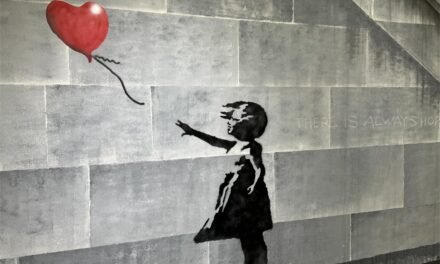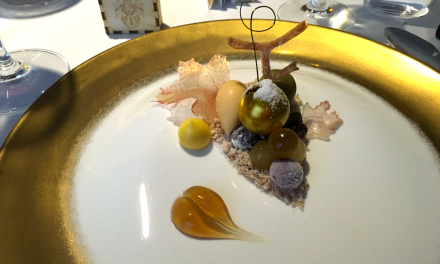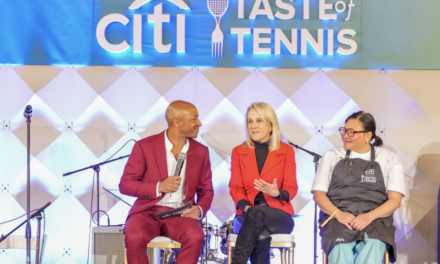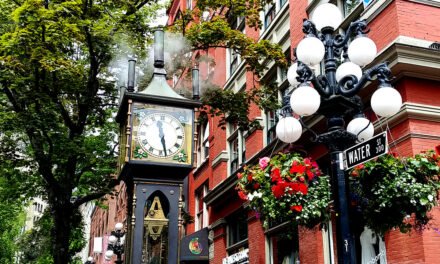
Exploring ‘Transfigured Immortality’ with German-Egyptian Sculptor Dr Gindi
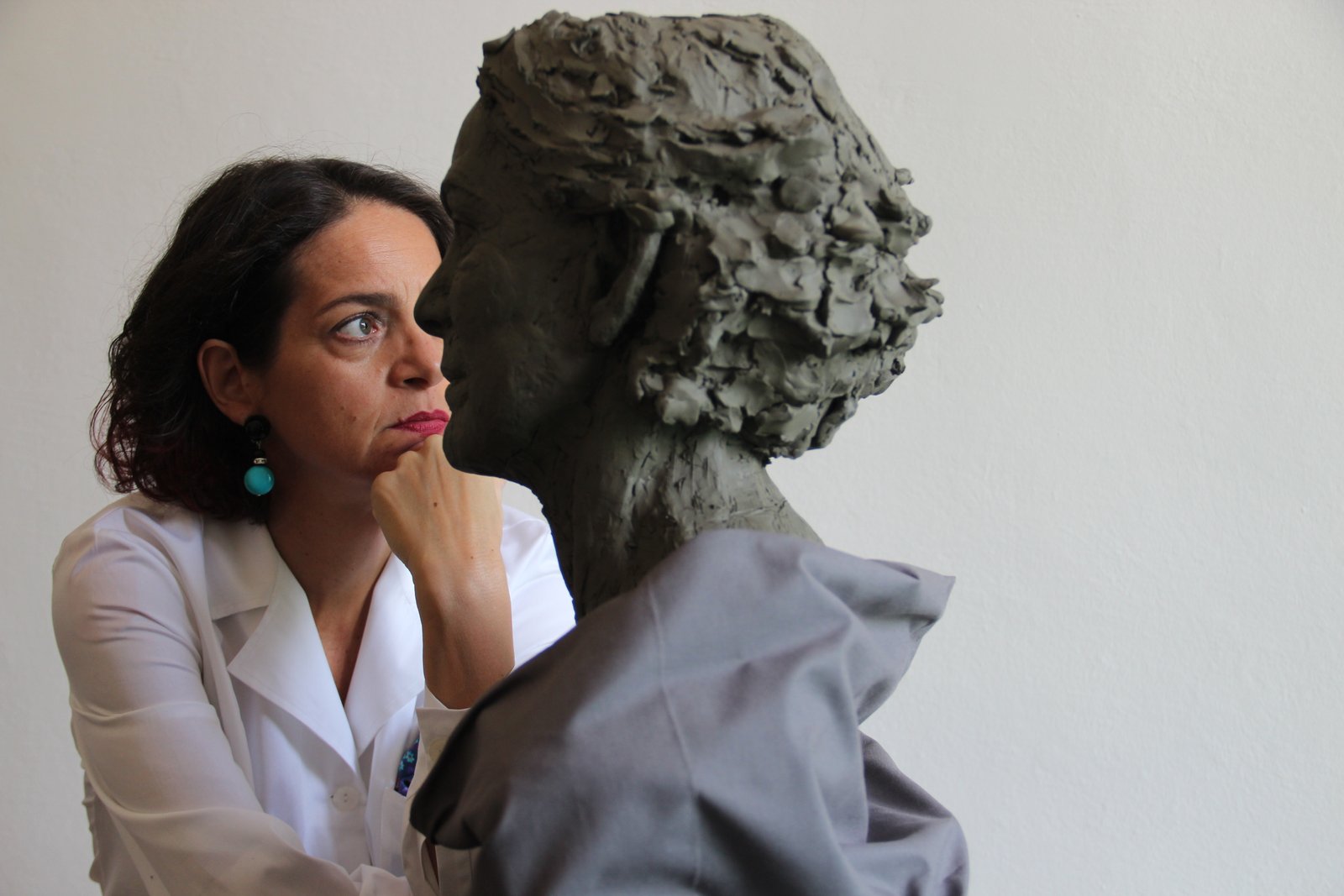
She revels in the physical aspect of humanity, but also in the psyche of the fleshy nature. Dr Gindi, a renowned German-Egyptian sculptor and medical doctor, has spent her entire life wandering around different cultures and alongside emotional abysses.
“Your preconscious and unconscious desires are simply buried deep below the surface”
If you have previously come across her work, you may have observed that throughout her work, she attempts to understand why certain phenomena appear as they are and why she interacts with them in the way she does. Her classical training as a sculptor enables her to approach humanness more profoundly. Through working with models and meticulously exploring the human morphology, inner dialogues are evoked and reflected in her works. Her sculptures are made from different materials, with the most recent ones generated of clay and later transformed into bronze.
As a child, Dr Gindi formed sculptural miniature worlds with the sand she found in her parent’s garden. This eventually led her down a path towards science, where she “once again used [her] hands,” but this time for physical examination, surgery, and dissection.
Luxe Beat Magazine: Thank you for speaking with us today, Dr Gindi. You are a trained medical doctor. How does that experience lend favor to your work as a sculptor?
Dr Gindi: My training as a medical doctor and study of human anatomy might have led to higher levels of purity in my sculptures. The inner elements that impart authenticity are almost naturally evolving into morphological structures. As a result, my works do not represent the depiction of lifeless specimens; rather I aspire to explore the essence of the way we are. The human is always in the center of my creative musings – I revel in the physical aspect of humanity, but also in the psyche of the fleshy nature.
As a matter of fact, I worked as a psychiatrist for adolescents over a period of time. I learned that our preconscious and unconscious desires are buried deep below the surface. As a sculptor, I want to break free from the constraints of the rational mind. Educated in classic sculpting – two decades after my initial foray into medicine – I now oscillate between references in the material world and the intended depth of universal oblivion: The key for me is to unveil the magic of poetry in both the outer and inner form.
LBM: Where did the inspiration of sculpting with clay first come from?
Dr Gindi: By pure coincidence, or rather a destiny. When I first touched clay, I couldn’t stop. To this day, it is like my fingers and hands are one with the clay. I feel like I am part of my creations and I am addicted to the earthly shaping of gestalt. Yet, the coronation of my ideas and perceptions materialize for me in the bronze casting process. Thereafter, I experiment with different patinas to give my pieces the last dimension and to ultimately engender the very ephemeral nature of being. It is the entire process, from the initial idea to the final piece, which I fell in love with.
Transfigured Immortality and Ancient Egyptian Lore
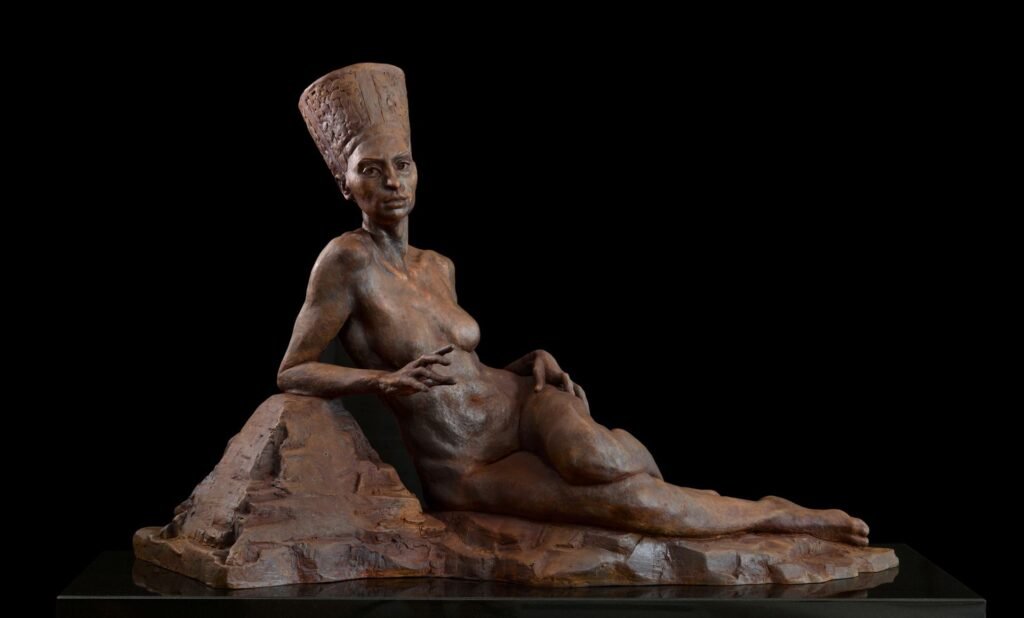
Transfigured Immortality | In the prime of her life, a Lady of Grace is leaning on her last place of rest. Anticipating her death, she is shaping the future with a sense of purpose. Will her trace live on? | Photo Courtesy of Dr Gindi
Dr Gindi’s current focal oeuvre explores an area on the periphery of the ancient Egyptian concept of immortality, known as “Transfigured Immortality.”
“It is one that most humans, since antiquity, will no doubt have pondered upon – the intention of bequeathing a legacy.” For Dr Gindi, who was brought up in Germany in a multicultural environment with Egyptian roots, Egyptian mythology was an important influencing factor. Her work started from a spirited world of alchemical significance in her childhood.
“’Transfigured Immortality’ depicts a graceful lady – some might say an Egyptian Pharaonic queen – in the prime of her life, leaning on her last place of rest. She traverses the dark spots in life, like scattered light glistening from the deep, leading the way to the gate of the unknown. By accepting the world beyond, she could blaze her present life in dignity. She – and I – respect the diversity of culture, contrasting beliefs, and the vast possible portraits of life.”
Her sculptures are often perceived as a medium to travel to cultures and civilizations, such as Ancient Egypt. “Our collective culture is our bedrock and makes us who we are, yet we need to encourage deeper cultural awareness to create a shared legacy between people of different upbringings.”
LBM: How would you describe your discipline, work-ethic, and schedule from day-to-day?
Dr Gindi: The public often identifies artists as free-spirited loafers who indulge in an eccentric or even chaotic way of life. This is often very far off reality: for me, I am obliged to discipline, and I thrive for eternal learning. I arrange my day into phases of sculpting and relaxation as I need a well-defined framework to concentrate, conceptualize and create. In my room, I am torn between doubts and insights. I experience my Eureka moments when I am about to understand the underlying logic of a given or hidden form or a previously unsolvable composition of clay which becomes clear and obvious. New incarnations of our fateful trajectory into human potentialities lead to exclamations of inner joy. It is this interplay of predestined structure and cerebral diffusion which makes me tick.
LBM: What do you want patrons to know about your work and take away?
Dr Gindi: The idea is to engage patrons with continued devotion for what really matters in our short human existence. I wish to encourage humans to be part of this journey which is always a very personal one. As both sculptor and physician, I am apprehensive of the gradual human desolation. I ultimately want to offer a sense of purpose in an increasingly callous world – I see myself as a catalyzing medium for change.
My work also focuses on the singularity of humans and the individual potential of transformation as on the different processes that such transformation provokes. Furthermore, my sculptures capture the moment when the invisible overtakes and an intrinsic process in our lives is induced. Submitting to fate and having a sense of resignation can often be the norm, but if we can metamorphosize these attitudes, we could be able to model the infinity of our existence. I wish my work to be timeless, profoundly reflective of existential arousals, such as desire and fulfillment to finally echo the poetry of life.
Sculpting Amidst a Global Pandemic
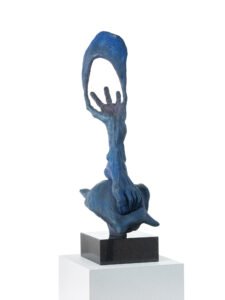
Interstellar Dilemma | A foot and a hand are moving together, apart. Seemingly rooted in the here and now, we strive for distant elevation. Is there such existence as matter without energy, and Earth without the Divine?
The beauty behind sculpting, according to Dr Gindi, is that it doesn’t follow in the same footsteps that other creative outlets demand.
“I don’t feel that the perceived demands for continuous creative output are a challenge. I divert myself from the pressure to produce – I finish a piece whenever I want, and in whatever shape and texture I want. That’s the birthright of any artist.”
During our conversation, Dr Gindi referenced a German conceptual artist by the name of Joseph Beuys, who famously said that “everybody is an artist.”
“I interpret his words that each individual has a deep need, as well as a fundamental ability, to create and be creative,” Dr Gindi explained. “Like Beuys, I lived in Düsseldorf for many years. He was omnipresent throughout my youth and left a deep impression on me – I admire his astounding radicality: he converted his life experiences into art. It is a destiny to lead the multifaceted and multilayered life of an artist. Our capacity for detachment allows us to be active players in our lives. I encourage everybody to follow the path of imaginative self-determination. Artists shall always seek the dialogue with other people, and vice versa.”
Yet, nobody predicted that the global pandemic that is the coronavirus would continue to find shelter throughout the U.S. and the world after a year, with no signs of letting up.
“I am very sad and feel for the victims of COVID-19. The pandemic is killing the elderly and vulnerable and provoking prolonged social and economic misery. COVID-19 taught me to concentrate on the essentials of humanity. I am not condemning the pre-pandemic affluence of our lavish consumerist societies, but I believe that artists need to portray antidotes to the prevailing trivial state of the world. It might sound pretentious but the pandemic was perhaps a blessing in disguise for every individual’s efforts to rediscover their primal mode of being. In my recent works, I mold the true bareness of mankind. And I unconsciously juxtapose light and shadow, bliss and grief – the dramatic brunt of this disease. Having explored the transitions of shadow, I wish to capture the startling facets of light. This is why, perhaps, none of my creations are dispassionate.”
For those interested in Dr Gindi’s work, you can contact her through her website, or on social media by following @gindisculptor on Instagram. “Thank you very much for giving me the chance to bring my works and sculpting approach closer to you and the world today.”
Feature image courtesy of Dr Gindi


